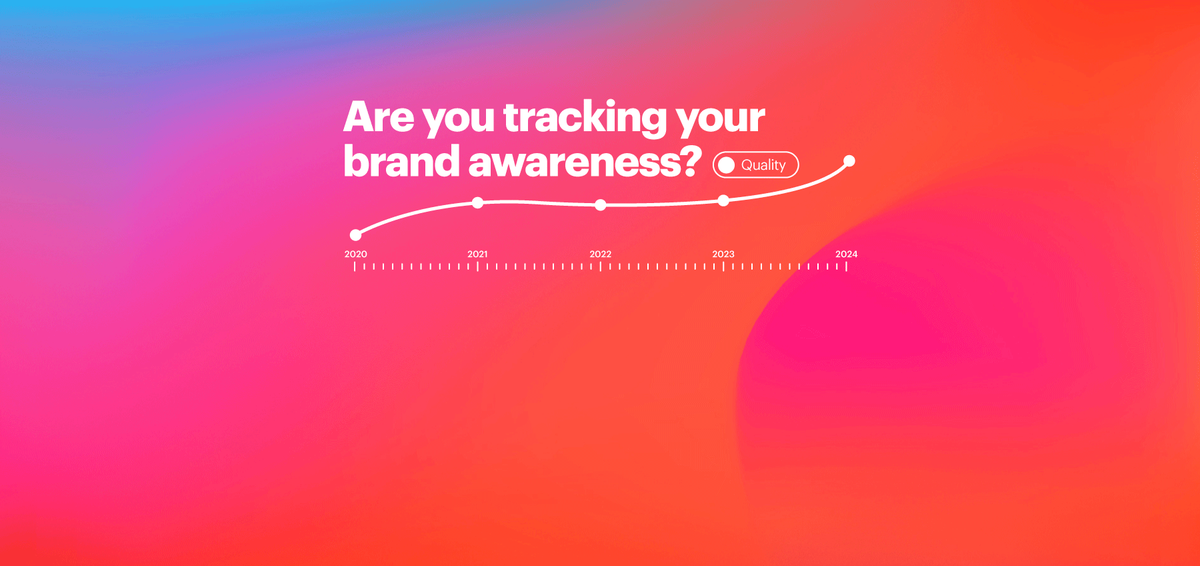
How to measure brand awareness
Measuring brand awareness is essential for understanding your brand's market presence and how effectively you're reaching potential customers. In today's competitive marketplace, a strong brand is a powerful asset. From increased sales and market share to customer loyalty and advocacy, knowing how to successfully build and track brand awareness presents a strong foundation for reaching marketing and business goals.
In this article, we delve into how you can measure, track, and leverage brand awareness to your advantage:
What is brand awareness?
Brand awareness refers to the degree to which consumers recognize and remember your brand. It's not just about knowing you exist; it's about being top-of-mind when it matters most, and the associations and emotions consumers have with your brand. Imagine someone needing a lift to the airport. If 'Uber' immediately pops into mind, that's brand awareness in action.
It can present itself in different forms:
- Brand recognition: Simply recognizing the brand name or logo.
- Brand recall: Recalling the brand when prompted with a product category.
- Brand preference: Choosing a specific brand over competitors.
- Brand loyalty: Being a repeat customer and actively advocating for the brand.
Why is brand awareness important?
Building strong brand awareness isn't just about vanity metrics; it's a strategic investment that fuels your marketing and sales initiatives, impacting efforts across various stages of the conversion funnel.
- Effective marketing: Brand awareness makes your marketing efforts more effective. People are more receptive to messaging from brands they already recognize.
- Competitive advantage: Strong brand awareness positions you ahead of competitors in the consumer's mind. They're more likely to consider your brand when making purchase decisions.
- Increased sales and conversions: Consumers are more likely to choose familiar brands they trust. By effectively tracking brand awareness, you can gauge how well your marketing efforts are translating into brand recognition and sales.
- Customer loyalty and advocacy: Positive brand associations cultivate customer loyalty and advocacy. Loyal customers become repeat buyers and recommend your brand to others, organically boosting sales and brand awareness through word-of-mouth marketing.
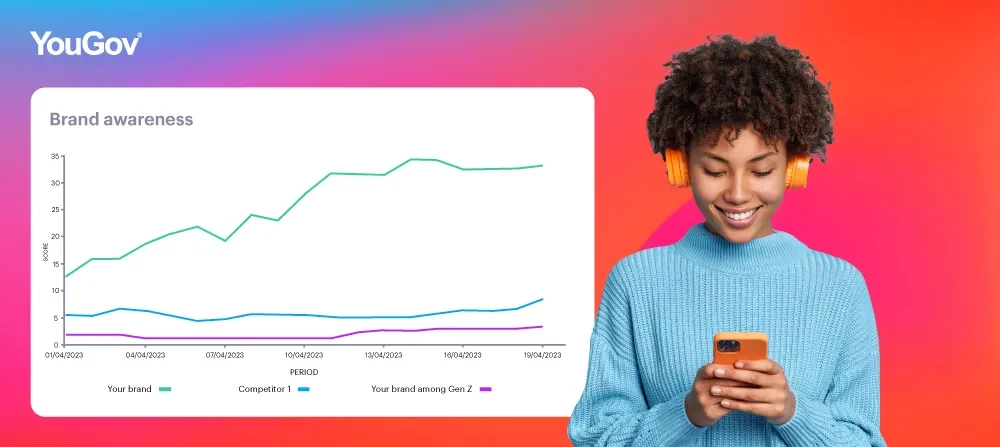
How to measure brand awareness
There are a variety of methods to measure brand awareness, and we've compiled a list of the most important ones to help you understand your brand's reach and impact.
Social listening
Social listening allows you to monitor online conversations about your brand, providing insights into public sentiment, recognition, and the effectiveness of your marketing efforts.
How to measure:
- Brand mentions: Track the volume of mentions across various platforms to understand brand awareness levels.
- Sentiment analysis: Analyze the sentiment of mentions to see if people are talking about your brand positively, negatively, or neutrally.
- Reach and engagement: Track the reach and engagement of your brand mentions to gauge the overall impact of your brand on social media.
Branded search volume
Branded search volume refers to the number of times people search for your brand name or specific branded keywords (e.g., "[your brand name] + discount code"). This metric is a strong indicator of brand awareness because it shows how many people are actively looking for you online.
How to measure:
- You can use platforms like Google Search Console or keyword research tools such as SEMrush and Ahrefs to track the total number of searches for your brand name and branded keywords over time. You can also find out where users are searching from and what device they are using.
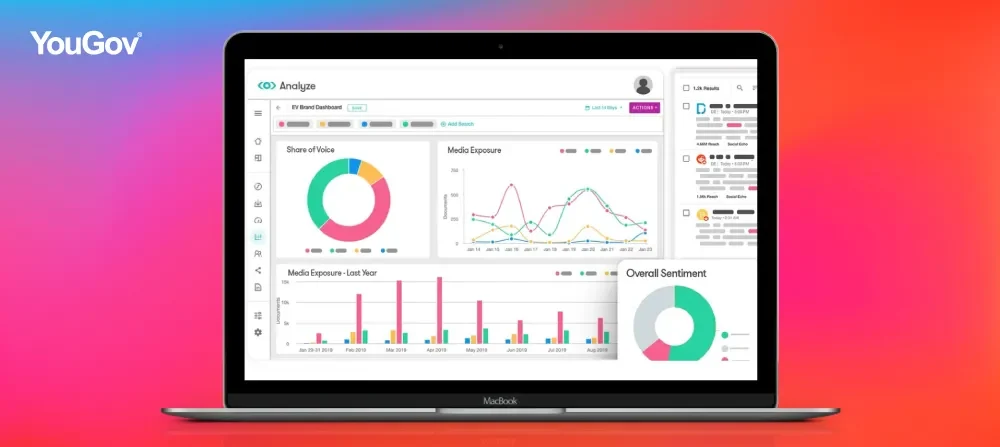
Website traffic
By examining your website traffic, you can understand how many people are finding your website, how they're getting there, and how well your website is engaging them. This information can be crucial for refining your website's design and content to better attract and convert visitors who are aware of your brand.
How to measure:
- Total website traffic: Track the overall number of visitors to your website over time. An increase in traffic can indicate growing brand awareness. However, it's important to consider other factors that might influence traffic, like seasonal trends or recent marketing campaigns.
- Direct traffic: Direct traffic refers to visitors who typed your website address directly into the browser bar. This suggests a higher level of brand awareness as they already know your brand and are actively seeking you out. Monitor the trend in direct traffic to gauge brand recognition.
- Bounce rate: Bounce rate refers to the percentage of visitors who leave your website after viewing only one page. A high bounce rate might indicate that visitors are not finding the information they need or that your website is not user-friendly. While not a direct measure of brand awareness, bounce rate can provide insights into how well your website is converting visitors who are already aware of your brand.
Brand awareness surveys
Brand awareness surveys directly measure consumer recognition and perception of your brand. Through targeted questions, these surveys evaluate how familiar your audience is with your brand, what attributes or values they associate with it, and their likelihood of choosing your brand over competitors.
How to measure:
- Survey design: Develop a set of questions focused on brand recall, recognition, and preference. This might include asking if consumers are familiar with your brand, can recall it unaided from a product category, or prefer it over others.
- Distribution: Use online platforms or research firms to distribute your survey to a representative sample of your target market.
The responses gathered during brand awareness surveys offer direct look into what customers truly know and think about your brand.
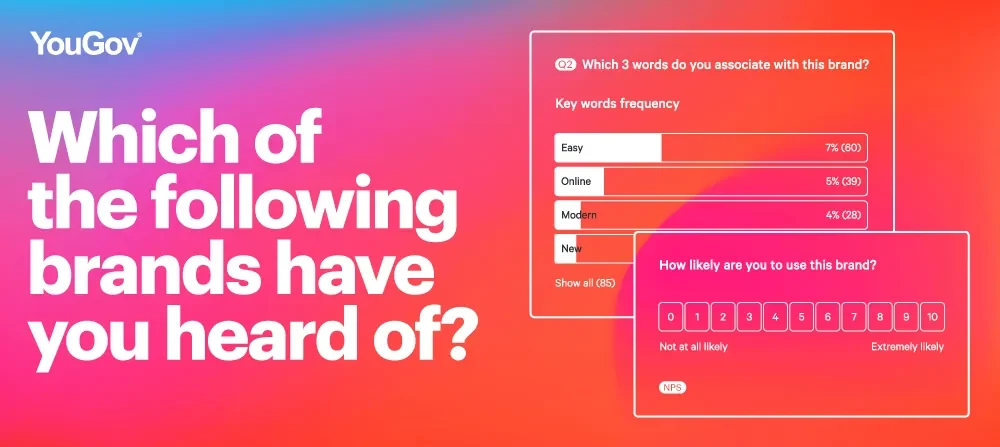
Share of voice
Share of Voice (SOV) measures your brand's visibility and presence within the market compared to competitors. It shows how much of the conversation your brand owns across various channels, including social media, search engines, and traditional media.
How to measure:
- Monitoring tools: Use social listening and SEO platforms to track the volume of mentions of your brand compared to competitors.
- Analysis: Break down the data by channel to understand where your brand is strongest and where there may be opportunities for growth. This can help inform your marketing strategy and allocation of resources.
Earned media coverage
Earned media coverage refers to publicity your brand receives without directly paying for it. This can include mentions in news articles, customer reviews, influencer content, and social media mentions from non-paid sources. Positive earned media coverage can significantly boost brand awareness and credibility.
How to measure:
There are several ways to measure and track your earned media coverage:
- Brand mentions: Track mentions of your brand name and relevant keywords across various online platforms, including news websites, blogs, and social media. Tools such as Brandwatch and Mention offer comprehensive social listening capabilities.
- Reach and engagement: Monitor the reach and engagement of earned media mentions with platforms such as Google Analytics. This helps measure the impact of the coverage on your brand awareness.
- Media value equivalent (MVE): This metric estimates the advertising cost you would have incurred to achieve similar reach and exposure through paid advertising. While not a perfect measure, MVE can provide a general idea of the value of your earned media coverage.
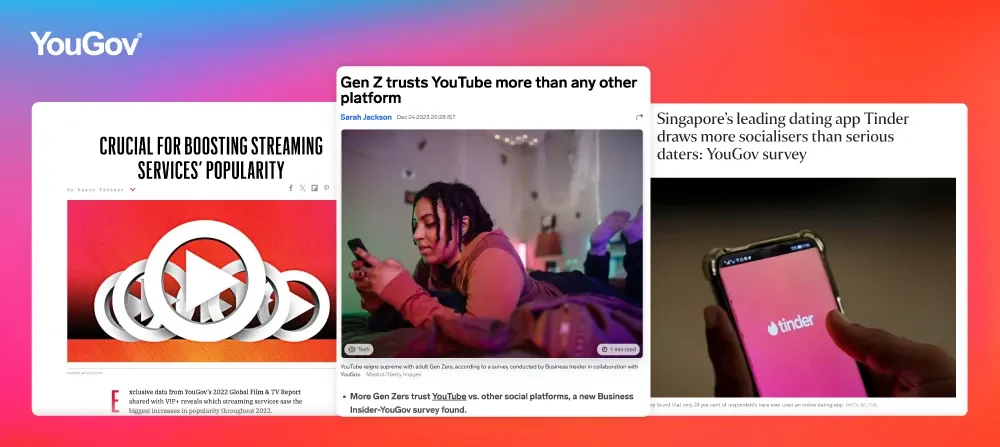
Referral traffic
Referral traffic measures the visitors to your website coming from direct links on other websites, not through direct searches or social media. It reflects the extent to which other sites find your content valuable enough to link to it.
Most website analytics platforms, like Google Analytics, allow you to track referral traffic.
Here's what you can measure:
- Source of referral traffic: Identify the websites referring visitors to your site. This can indicate brand mentions in articles, blog posts, or industry publications.
- Landing pages: Analyze which pages on your website receive the most referral traffic. This might shed light on the content that resonates with other websites and potentially positions your brand as a thought leader.
- Volume of referral traffic: Monitor the overall volume of referral traffic over time. An increase in referral traffic might suggest growing brand awareness and positive brand mentions from external sources.
Performance of content marketing
Content marketing is a strategic approach to creating and distributing valuable, informative content that attracts a defined target audience and drives profitable customer action.
By consistently providing high-quality content, you establish your brand as a thought leader in your industry, educate potential customers, and ultimately increase brand awareness.
Tracking the performance of your content marketing efforts allows you to measure its impact on achieving this goal.
How to measure:
- Organic traffic: Monitor the amount of organic traffic your website receives from search engines to establish how well your content ranks for relevant keywords and attracts visitors who may not have been previously aware of your brand.
- Brand mentions within content: Look at the frequency and context of your brand being mentioned in other content pieces (e.g., blog articles, social media posts). This can be a good indicator of how your content marketing efforts are generating brand awareness and potentially backlinks that can further increase visibility.
- Social shares and mentions: Track the number of times your content is shared and mentioned on social media platforms. High social engagement suggests your content resonates with your audience.
By monitoring these key metrics, you can adjust your strategy to better target new audiences, affirm your brand's authority, and increase brand recognition.
How YouGov can help
Tracking your brand awareness with YouGov is easy. Whether through a one-time survey to your audience, a custom brand awareness tracker, or connecting to brand tracking tools - YouGov BrandIndex for global tracking across core metrics or YouGov CategoryView for industry-specific insights - we ensure you always have the right tools at your fingertips for measuring brand awareness effectively.
YouGov BrandIndex is our syndicated daily brand tracking tool, drawing on the thoughts and opinions of our panel of over 27 million registered panel members globally. It assesses 16 core key metrics every day, providing a complete picture of what people see, hear, and think about your brand along their consumer journey.
For businesses looking for a more tailored approach, YouGov CategoryView offers an industry-specific brand tracking solution. Combining brand, audience, and category-level data, the platform provides insights into sector-specific trends, allowing you to track your brand’s performance within the context of your industry.
Both tools offer the ability to place your brand in a broader context. While YouGov BrandIndex allows you to compare your brand to thousands of others across hundreds of categories globally, YouGov CategoryView zooms in on the unique trends and patterns within your sector, providing actionable insights that are specific to your market.
Insights are delivered to through an easy-to-access and always-on dashboard, ensuring you’re constantly up to date on your brand’s awareness and market position.
Know what is happening to your brand, and your industry, all the time.
If you enjoyed reading this, take a look below at some additional resources we thought you might like:
Interested in how to build your own top brand? Our guide offers a comprehensive walk-through designed for marketers and managers ready to make a real impact: How to build and measure your brand’s success.